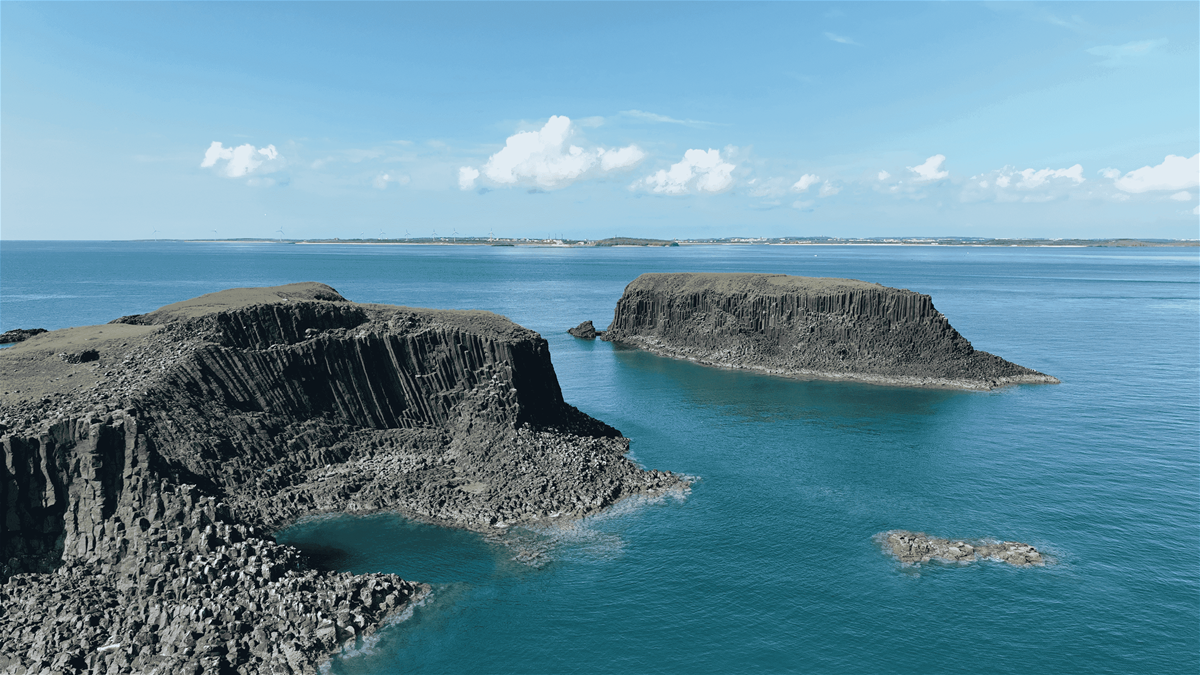Jisangyu Island Introduction
When it comes to the basalt landscapes of Penghu, one cannot overlook Jishan Islet. Known as the "Huangshan of the East," Jishan Islet is located 4 kilometers northeast of Beiliao Village in Huzhixiang. It consists of the larger and smaller Jishan Islands, which are connected during low tide, allowing for a walk between them. Both islands are basalt tablelands with clear columnar joints around the sea cliffs. The larger Jishan Islet has multiple sea erosion grooves and sea caves, with a shallow area located to the southeast. The smaller Jishan Islet is characterized by its closely arranged hexagonal columnar basalt, resembling an organ, which is why it is named "Organ Islet" in English. The basalt here often contains green olivine, which in geology represents the components from deep underground and is a high-melting-point mineral brought up during the ascent of basalt lava. This unique landscape has been designated as a basalt nature reserve and requires prior application to access the island. In winter, like nearby Dinggou Islet, Jishan Islet is abundant in nori; since the Qing Dynasty, harvesting has been alternated among the communities of Guaye, Nanliao, and Honglu, serving as a primary source of income for nearby villages and referred to as "black gold" by residents. In spring and summer, it also serves as a breeding ground for terns, primarily the crested tern, and even hosts the rare migratory bird known as the "mythical bird," the black-naped tern. Visitors can take cruises to observe various birds, making it an excellent destination for birdwatching enthusiasts.




























